Contents
- 1. Meaning of the words Supreme God, God, incarnation and deity
- 2. Concept of God from various viewpoints
- 3. Concept of God according to ethnology
- 4. Origin and meaning of Parameshvar
- 5. Some other Names
- 6. Label of The Supreme God
- 7. Special features of Supreme God
- 8. Percentage of characteristics of The Supreme God and the three components in animate and inanimate creation
- 9. Spiritual experience of seekers
1. Meaning of the words Supreme God, God, incarnation and deity
1.1 Confusion in terminology
Words such as Supreme God (Parameshvar), God (Ishvar), deity (dev), etc. are used by some with varied meanings and by others as synonyms. Swami Muktanand on one occasion said, ‘No matter what you label Him as God (Ishvar), Brahman, unmanifest energy or Divine Energy (Chitshakti), the meaning is the same.’(1) Though this is true at Swami Muktanand’s spiritual level His quote makes one thing clear, that there is confusion in the usage of all these words. To avoid this, we will use the above words according to the definitions given below.
1.2 Meaning of the words
| Name according to the Path of Devotion* |
Quality | Energy | Spiritual experience |
| 1. Supreme God | Unmanifest (nirgun) | Unmanifest and inactive |
Serenity (Shanti) |
| 2. God | Unmanifest | Manifest and active |
Bliss (Anand) |
| 3. Absolute incarnation (purnavtar) Krushna |
Absence of mind and intellect therefore unmanifest. Possesses a physical body there- fore manifest (sagun) |
Completely manifest and active |
Varies according to the spiritual emotion of the seeker |
| 4. Deity | Manifest | Incompletely manifest and active |
Varies according to the spiritual emotion of the seeker |
* Names from the Purans (mythological texts) are more prevalent.
According to the Path of Knowledge (Dnyanyoga) only The Supreme God is real. Everything else is imaginary. God is an imaginary idea of the embodied soul (jiva). The Supreme God is not imaginary but is the basic form of God and the embodied soul. Shiva in the Shaivite sect, Vishnu in the Vaishnavite sect, Ganapati in the Ganesh sect, etc. are the respective synonyms for God while Maheshvar, Mahavishnu, Mahaganapati, etc. are the corresponding synonyms for The Supreme God. Maha symbolises formlessness or the entire universe. In the Devi (Divine Energy) sect, Lakshmi represents God and Mahalakshmi, The Supreme God.
2. Concept of God from various viewpoints
Since understanding God according to ethnology is an intellectual exercise one is able to understand and accept it only to some extent but that is not really satisfying. With time, using his intellect man began to worship whatever proved useful to him, with a feeling of gratitude. Eventually one has to experience God through spiritual practice alone. Only then will one realise Him.
‘Man realised or experienced God even in his primitive state. Later as he began to evolve intellectually and materialistically Righteousness (Dharma) was generated from these deities and it further led to various philosophies. The three principles namely God, Righteousness and philosophy together constitute the triad of human culture.
3. Concept of God according to ethnology
Necessity is the mother of invention. Even the primitive man felt the inevitable need for and discovered a principle called God. Most researchers in search of the emotion behind this concept of God unanimously concluded that the God principle was just generated in man out of fear of the five cosmic elements in his environment. Seeing and experiencing the calamities caused by Nature, man attributed them to powerful deities and felt that he with his inadequate energy would not be able to combat such powerful deities. Therefore to prevent the deities from causing distress or harm to him, man bowed down before them and began to pray to them humbly.
The aphorisms (suktas) of the maruts from the Rugveda are prayers addressed to God in the form of a storm. For example (5.54-59) – O maruts, your prowess is vast. You frighten and make everyone tremble. O deities get rid of this dense darkness. Bestow us with light and protect us.
Emotions such as fear, astonishment and utility led to the generation of several new deities. On account of their utility, fire, the moon, the earth, water, medicines, etc. became deities. Due to its ability to enthuse the body and mind, divine wine (somras) was conferred with divinity by the Vedic sages.
So long as all these deities were formless there was not much closeness between them and man. During the period of cultural development man assigned deities with a human nature and imagined them to resemble him. Along with it gender differences too were generated among deities.
A sage or a priest who is the devotee of a deity describes the glory of that deity with great exaggeration and considers other deities as subordinate. This is seen throughout the Rugveda.’ (2)
According to the period (kal) the concept of God underwent changes as follows.
The Vedic period: It is noticed that all deities have been endowed with all the qualities as well as the characteristics of man.
The Brahman period: The humanisation of deities was completed. Just like man they were endowed with relationships like parents, siblings, etc. and also the four class (varna) system was applied to them.
The Upanishad period: Deities were classified as those who organise, those who enlighten and those who take action.
The Puran period: Significance of the Vedic deities Indra and Varun declined. Instead that of Vishnu and Shiva rose. The concept of the trinity of Brahma, Vishnu and Mahesh and that of the fivefold family (panchayatan) of Ganapati, Shiva, Vishnu, Surya and Divine Energy (Shakti namely Amba) became popular.
According to ethnology as primitive man evolved, his concepts regarding God gradually went on changing from Nature to animals and then to man.
3.1 Nature
Man began to consider the earth, clouds, sun, stars, planets, etc. as God one by one.
A. The earth: Primitive man began to consider the earth as the Primal Mother (Adimata), the Primal Energy (Adishakti), the First Lady (Aditi), etc. because he lived on the earth, survived due to the food available there and got shelter from the sun, rain and cold in Her caves. Thus the earth became the first female deity.
Forms of the earth: When man realised that he could not worship the entire earth as a deity, he conferred divinity upon various parts of the earth performing various functions as follows.
Santeri: Santeri means a snake hole. (Some people consider Santeri as a corrupted form of Shanteri). The young ones of a snake are born in a snake hole. Man began to worship the snake hole considering it as the womb of the earth, a symbol of creation. That is why in many parts of the world it is customary to offer soil from a snake hole to barren women.
Guardian deities of a territory (kshetrapaldev): Kshetra means a territory and pal means the protector. Later man realised that different events occur simultaneously on different parts of the earth, the climate varies, etc. In keeping with this the concept that there are different deities guarding each of these parts was generated. The deity guarding the territory of India is Bhairavnath and His Divine Energy is referred to as Bhairavi.
B. Deities in the sky
Clouds: As the primitive man evolved he realised that it was impossible to survive without rainfall on the earth . Hence he began to consider the clouds, especially the water laden clouds called iravan as God. Ira in Sanskrut means water.
The sun: The primitive man also realised that one cannot function without sunlight. Hence he began to consider the sun as God. In this way the clouds and the sun became the first masculine deities.
Planets and stars: As man evolved further he realised that planets and stars too had an effect on his life and so he conferred divinity upon them. Aphorisms (suktas) were composed on the various forces of Nature assigning them with Names such as Indra, Varun, Marut, Parjanya, Ushas, etc. All these are Vedic deities.
3.2 Animals
When man realised that animals too were useful like Nature he bestowed them with divinity.
The serpent (nag): Man began to consider the snake as a deity as it was the male symbol related to Santeri and creation. Formerly the custom of worshipping the serpent as the bestower of progeny was prevalent the world over. A majority of sects in the world consider the serpent as a deity.
Other animals: Once the serpent, an animal was considered as a deity the others like the bull, cow, horse, etc. followed suit and were conferred with divinity.
3.3 Man
As man became civilised he realised that leaders of the society also influenced his day-to-day life. Hence later he conferred divinity upon man as well. Thus animals selected as deities earlier became the vehicles of these human deities. Similarly some people who had accomplished a high status in life on account of their undertaking some great mission began to be worshipped as deities after their death. For instance in Gujarat, eunuchs worship Bahuchara Devi as a deity, in Rajasthan Rani Satidevi is worshipped likewise. The types of human deities are as follows.
‘Ritualistic worship of the brave (virpuja): A brave one (vir) is one who has sacrificed his life in a battle or when performing some brave act. He is courageous and powerful. The custom of ritualistically worshipping him began either as a mark of respect or to prevent him from causing harm. In the ritual called virpuja, unsculpted stones, marble blocks, wooden blocks or sculpted idols representing each brave one are placed vertically and worshipped.
Just as the word “vir” is used to refer to a person who is brave so also it refers to village deities (gramadevata) from the category of demigods (yakshas) who have a cruel and fearsome temperament. Generally they are spoken of in terms of numbers as the five brave ones (panchavir), fifty-two brave ones (bavanvir), etc. Though all over India they are referred to in specific numbers yet in different regions they are named differently. Some of the brave ones like Narsing, Zhoting, Cheda, Vetal, Mesoba, Munja, Bhairav, etc. among males and Tukai, Mayarani, Jakhmata, etc. among the females are worthy of mention.
Memorials for the brave: In villages such memorials are found in abundance. With the passage of time the brave ones acquired the status of village deities. In Maharashtra one comes across stones smeared with a saffron coloured powder (shendur) at every nook and corner. These are the brave deities. They are named Mhasoba, Mhaskoba, Chedoba, Biroba, Maruti, etc. In some places these brave ones are called pirs. However they are in no way connected to the Muslim mendicants who are also called pirs.’(3)
A. Male: The clouds and the sun symbolise the masculine deities which are of the following two types.
Unmanifest form of Divine Energy (Shakti) – Infant form: Balkrushna
Manifest form of Divine Energy: Shankar, Vishnu, etc.
B. Female: It symbolises the earth. The types of feminine deities are as follows.
Unmanifest form of Divine Energy: A virgin girl
Manifest form of Divine Energy:
Reproductive form: The birth passage is considered as a symbol of reproduction. This form of the deity is known by the Names of Lajjagouri, Chinnamasta, Padmalaya, etc.
Maternal form: The breast is considered as the symbol of motherhood.
Worship of nude feminine deities was prevalent due to their qualities of procreation and motherhood.
4. Origin and meaning of Parameshvar
Parameshvar (परमेश्वर) = paramaha (परम:) + ishaha (ईश:) + varaha (वर:) and ishaha (ईश:) = ihi (ई:) + shaha (श:).
‘Ihi ikshate (ई: ईक्षते) means the one who observes, that is the one who perceives, the one who is omniscient and shaha shamayate (श: शमयते) means the one who bestows Serenity (Shanti), satisfaction. Hence the one who is omniscient and who endows Serenity is Isha (God). Varaha means supreme. Ishaha (ईश:) + varaha (वर:) = Ishvaraha (ईश्वर:) means the one who is the ultimate in omniscience and in bestowing Serenity is Ishvar. Paramaha means supreme. Paramaha (परम:) + Ishvaraha (ईश्वर:) = Parameshvaraha (परमेश्वर:), so He is the one who is supreme in omniscience and in bestowing Serenity. That is why since times immemorial mankind has always been attracted to The Supreme God who bestows Serenity.
‘Ish (ईश्) means to be the master, to exercise power, to control or to restrain and ash (अश् ) means to pervade everywhere. It is from these roots that the word Ishvar has been derived. Thus God means the master or the ruler. Generally the word Ishvar means – the master of the universe, the Creator, Sustainer and Destroyer, all pervading, omniscient and the supreme among all deities. Shiva, Vishnu, Rama, Krushna are words which denote God. However along with God these words project a sectarian approach. But the word God and Supreme God solely symbolise The Lord who is beyond all sects. God is the Creator, is all pervading, the master and regulator of the universe, yet distinct from creation, is worthy of worship, The Lord of all deities and the Absolute Being (Purush). From this broad meaning of God one thing which is clear is that the deities Brahma, Shiva, Vishnu, etc. are not God (Ishvar) because eventually for creation, sustenance and dissolution of the universe They need several deities from Their retinues. Brahman too is not God because though It is a concept for contemplation It cannot be ritualistically worshipped.
There is not a single deity in the Vedic group of deities who can be referred to as God or The Supreme God. The deities Indra, Agni, Mitra, Varun, etc. from the Vedas have not attained the status of God. They have been conferred with the title “Niyatakarmanaha” meaning deities who carry out the tasks assigned to them.’(4)
According to the Shaiva sect Lord Shiva in the nirbij superconscious (samadhi) state is Shiva’s unmanifest form, that is in other words The Supreme God. According to them Shiva in meditation is God and the one dancing or playing a game of dice (saripat) with Parvati is the Great Illusion (Maya). Among the Vaishnavites Sheshashayi (Vishnu resting on the serpent Shesh as His couch) or Anantshayani Vishnu is Vishnu’s unmanifest form, that is The Supreme God. Their devotee-loving Vishnu is God and the one along with Lakshmi is the Great Illusion.
5. Some other Names
Parameshvar is basically a term used to denote The Supreme God in the Path of Devotion (Bhaktiyoga). In the Path of Knowledge (Dnyanyoga) He is called The Supreme Brahman (Parabrahman), The Supreme Soul (Parmatma) and Isham.
6. Label of The Supreme God
The word ‘Omkar’ refers to The Supreme God. It is only a label and is not His Name. Every name is associated with a form but The Supreme God is formless, so how can He have a Name? Although this is so, while referring to Him one has to use some word and that is Omkar. The Supreme God is the attributive of the label Omkar.
7. Special features of Supreme God
Omniscience: This is because of His spiritual knowledge and not frequencies.
Bestower of Serenity or gratification
Formless
Unchanging: Just as the centre of a spinning wheel is fixed so is He.
Unmanifest energy: Since He does not carry out any mission His energy is unmanifest.
Devoid of components (nirgun)
Existence in the form of society: The Supreme God does not have an individual form but exists in the form of the society; hence He is not supposed to do anything as an individual. That is why in the Shrimadbhagvadgita (3:22) The Lord has said,
न मे पार्थास्ति कर्तव्यं त्रिषु लोकेषु किंचन ।
नानवाप्तमवाप्तव्यं वर्त एव च कर्मणि ।।Meaning: O Arjun, in these three worlds neither do I have any duty nor is there anything left for Me to attain, yet I perform My actions.
Detachment: ‘Laws of the universe are created along with it. The nature of fire is such that if one puts one’s finger in it, it gets burnt. Similarly that of water is to drown whatever falls into it. The body gets diseased if restrictions are violated. Similarly all transactions from Nature are bound by restrictions. Man too has to understand these rules. The cycle of the universe continues according to its law. There is no scope to blame God in that regard. Once the cycle of creation begins The Supreme God does not interfere. Allotting the result of an action is His only task then. Once that occurs He remains detached and goes beyond the two defects of unsteady intellect and mercilessness is what the Vedic scriptures say (Vedasutra 2.1.34).’ (5)
8. Percentage of characteristics of The Supreme God and the three components in animate and inanimate creation
| Amount of the characteristics of The Supreme God % |
Sattva % |
Raja % |
Tama % |
|
| A. Main deities | ||||
| 1. Prajapati | Approximately 100 | 98* | 1 | 1 |
| 2. Brahma | Approximately 100 | 98* | 1 | 1 |
| 3. Shiva | Approximately 100 | 95* | 1 | 4 |
| 4. Vishnu | Approximately 100 | 96* | 3 | 1 |
| 5. Minakshi | Approximately 100 | 93* | 5 | 2 |
| 6. Bruhaspati | 98 | 90 | 8 | 2 |
| 7. Indra | 96 | 85 | 10 | 5 |
| 8. Ashvinikumars | 92 | 80 | 15 | 5 |
| 9. Thirty-three crores of deities |
88 | 60 | 30 | 10 |
| 10. Chitragupta | 82 | 70 | 20 | 10 |
| 11. Yama | 85 | 60 | 20 | 20 |
| 12. Varun | 78 | 70 | 20 | 10 |
| 13. Kuber | 76 | 70 | 10 | 20 |
| B. Basic elements | ||||
| 1. Basic absolute ether (akash) |
81 | 96 | 2 | 2 |
| 2. Basic absolute air (vayu) |
79 | 95 | 3 | 2 |
| 3. Basic absolute fire (tej) |
77 | 94 | 4 | 2 |
| 4. Basic absolute water (apa) |
75 | 92 | 4 | 4 |
| 5. Basic absolute earth (pruthvi) |
73 | 90 | 4 | 6 |
| C. Five manifest cosmic elements and the guardian deities of directions (dikpal) |
||||
| 1. Absolute ether (akash) |
5 | 5 | 1 | 94 |
| 2. Absolute air (vayu) | 1 | 1.5 | 1 | 97.5 |
| 3. Absolute fire (tej) | 1/one hundred thousand |
1 | 1 | 98 |
| 4. Absolute water (apa) |
1/one million | 0.5 | 1 | 98.5 |
| 5. Absolute earth (pruthvi) |
1/ten million | 0.5 | 0.5 | 99 |
| 6. Guardian deities of directions |
1/10 | 1 | 0.5 | 98.5 |
| D. Some deities on the earth | ||||
| 1. Guardian deities of a territory (kshetrapaldev) |
40** (30-40 kms.) |
5 | 1 | 94 |
| 2. Deity of a village (gramadev) |
5 (1 km.)** | 3 | 2 | 95 |
| 3. Deity of a place (sthanadev) |
1/1000 | 2 | 2 | 96 |
| 4. Deity of a premise (vastudev) |
1/1000 | 2 | 2 | 96 |
| 5. Deity of a forest (vanadevata), of a reservoir of water (jaladevata), of a mango grove (amjai), etc. |
1/1000 | 2 | 4 | 94 |
| E. Deities related to spiritual progress of man | ||||
| 1. Family deity (kuladevata) |
5 | 60 | 20 | 20 |
| 2. Founder of the family (mulpurush) |
4 | 55 | 25 | 20 |
| 3. Mother deity*** (matrudevata) |
1 | 20 | 30 | 50 |
| 4. Father deity*** (pitrudevata) |
1 | 20 | 30 | 50 |
| 5. Teacher deity (acharyadev) |
2 | 50 | 30 | 20 |
| 6. A saint of 70%**** spiritual level |
5 | 50 | 30 | 20 |
| 7. The Guru as a deity (subtle body)**** |
100 | 50 | 30 | 20 |
| F. Others | ||||
| 1. Man (in the Kaliyug) |
1/10000 | 20 | 30 | 50 |
| 2. Animals and birds | 1/one hundred thousand |
6-8 | 10-30 | 62-84 |
| 3. Plants | 1/one million | 4-6 | 3-10 | 84-93 |
| 4. Inanimate objects*** |
1/ten million | 0.5 | 0.5 | 99 |
* Prajapati, Brahma, Shiva, Vishnu and Minakshi support the three components sattva, raja and tama. Though the three components are supported by Them and exist along with Them yet the deities Themselves are not composed of them; rather They are beyond them (trigunatit). The percentage of the three components supported by Them is given in the table above. Because of Their support to the three components these deities are manifest (sagun). However in this context sagun means along with the three components (sahagun).
** The maximum distance at which the characteristics can be perceived.
***The varying proportion based on impressions (sanskars).
****Though the proportion of the three components beyond a spiritual level of 70% remains constant, yet the total quantity decreases. Refer to the point ‘Spiritual level and the three components (triguns)’ in ‘Science of Spirituality: Vol. 4 – Path of Guru’s Grace (Gurukrupayoga)’.
From the above table it will also be clear that attraction to places of pilgrimage as compared to other places, to saints and Gurus as compared to average people, to human beings as compared to plants and animals and to living beings than to inanimate objects is more due to their greater ability to bestow the spiritual experience of Serenity (Shanti).
9. Spiritual experience of seekers
Serenity
Reference:
‘Supreme God, God, Incarnations and Deities’, published by Sanatan Sanstha.
[1]. Kalpavrukshatali (Swami Muktanandachya Sahavasat). First compilation, 5th August 1986. Publisher: Gurudev Siddhapith, Ganeshpuri, District Thane, Maharashtra 401 206.
Bharatiya Sanskrutikosh. Publisher: Pandit Mahadevshastri Joshi, Secretary, Bharatiya Sanskrutikosh Mandal, 410, Shanivar Peth, Pune 411 030.
First edition: Vol. 3 to 10 Second edition: Vol. 1 and 2
[2]. Vol. 4, Pg. 431-433 [3]. Vol .9, Pg. 19
[4]. Vol. 1, Pg. 579, 580 [5]. Vol .2, Pg. 146

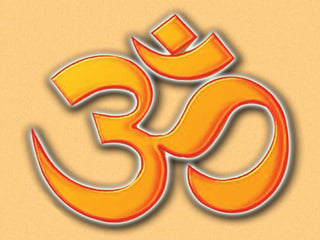
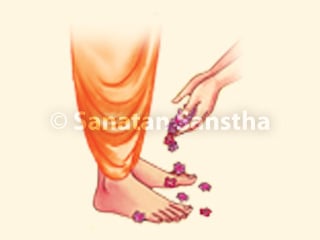 What is the difference in getting desires fulfilled from saint and subordinate deity?
What is the difference in getting desires fulfilled from saint and subordinate deity?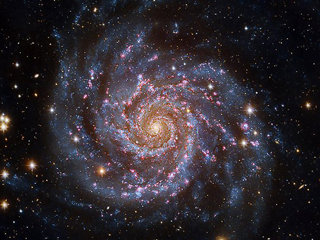 Which are the five essential components for functioning of Universe?
Which are the five essential components for functioning of Universe?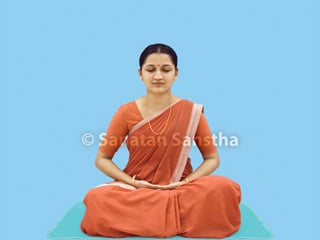 How are deities associated with various organs in Human body?
How are deities associated with various organs in Human body?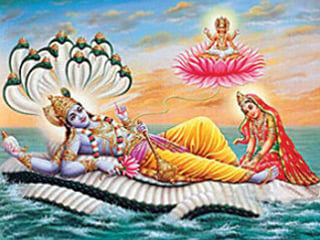 Why does law of Karma not apply to absolute incarnation?
Why does law of Karma not apply to absolute incarnation?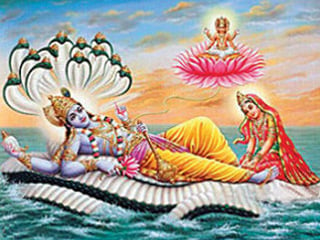 Why does God not assume an incarnation as soon as unrighteousness begins to grow?
Why does God not assume an incarnation as soon as unrighteousness begins to grow?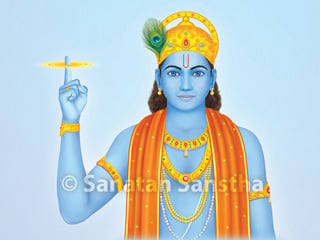 When is an incarnation known as absolute incarnation?
When is an incarnation known as absolute incarnation?